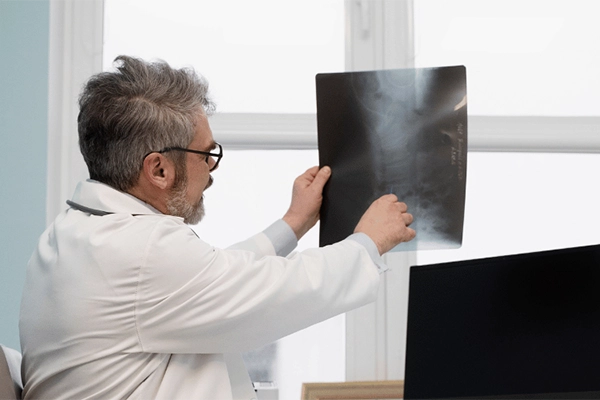Topics
Why does COVID-19 cause joint pain?
During the acute phase of infection, COVID-19 may cause joint pain. This pain is frequently accompanied by sore muscles and other possible COVID symptoms. Joint pain can be felt throughout the entire body, although local joints such as the foot, ankle, knee, and shoulder are more commonly affected in some individuals.
The exact reason COVID-19 causes joint pain has yet to be fully understood, but several potential explanations exist. One possibility is that joint pain results from the body's immune response to the virus. This immune response can cause inflammation throughout the body, including in the joints, leading to pain and stiffness.
It is important to note that joint pain is not a universal symptom of COVID-19, and not all individuals with COVID-19 will experience it.
How to manage joint pain?
In addition to adequate rest and exercise, doctors may suggest the following for pain relief:
- Medications include paracetamol or nonsteroidal anti-inflammatory drugs (NSAIDs) such as ibuprofen or naproxen. Be sure to follow your doctor’s instructions before taking any of these medications.
- Hot and cold therapy can help to relieve pain and inflammation.
How long does joint pain last after COVID-19?
Following COVID-19 infection can vary from person to person, depending on factors such as the severity of the infection, age, and underlying health conditions.
After recovery from COVID-19, joint pain can persist for weeks to months. In some instances, joint pain can last for several months or longer.
It is imperative to seek medical attention if joint pain persists following COVID-19, as it may be an indication of underlying complications or secondary infections.
What to do if I still have joint pain post COVID-19?
If you are still experiencing joint pain even though you have recovered from COVID-19, you must try to return to pre-COVID activity as soon as possible.
It is common to want to avoid any sort of activity when experiencing pain, but inactivity and excessive rest can exacerbate joint and muscle problems. Instead, increasing your physical activity can help prevent muscle weakness and worsening pain. You can do this gradually by pacing yourself while you regain your strength.
It is important to discuss with your doctor before starting any treatment for joint pain after COVID-19, as they can help you determine the most appropriate treatment options.
Below are some recommended measures.
Strength and flexibility exercises
Strength and flexibility exercises can help with movement and reduce joint and muscle pain. You can try stretching, yoga, tai chi, resistance bands, and some weights if you are up for it.
You can also stay active by doing activities such as gardening and going for walks. Once you are feeling better, cycling, and walking uphill can be added to the list.
Positive thoughts
Having positive thoughts can help reduce pain and help you cope more effectively with your symptoms. Your road to recovery may be long, but it will be worth it.
Medication
Painkillers and topical ointments can help manage joint pain. If you are taking painkillers, make sure to follow the dosage prescribed by your doctor.
Make an appointment at Pantai Hospitals
A dedicated and expert team of Orthopaedic specialists at Pantai Hospital is available for consultation to provide the best care and assistance. Get in touch with us to book an appointment today if you have any concerns or questions about muscle and joint pain due to COVID-19.
Pantai Hospitals have been accredited by the Malaysian Society for Quality in Health (MSQH) for its commitment to patient safety and service quality.













